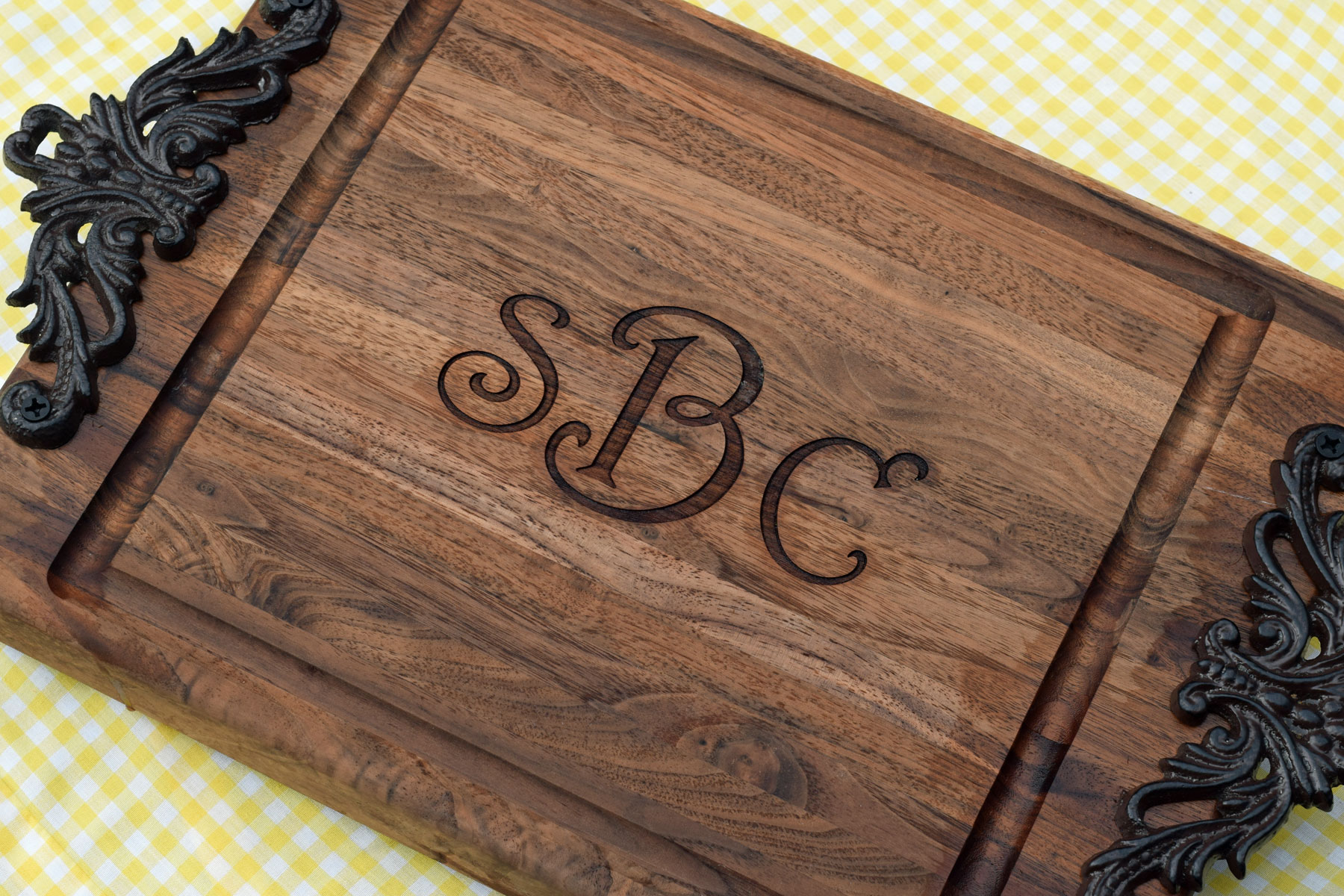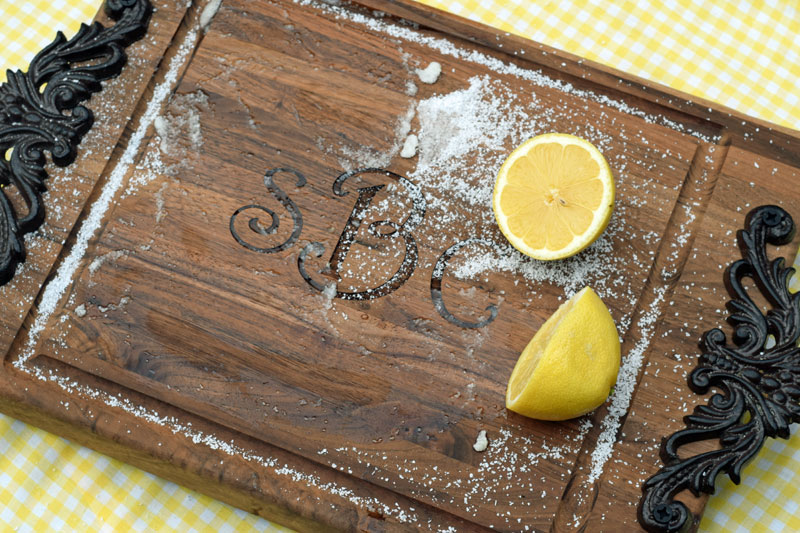I have a gorgeous cutting board, monogrammed of course, from my friends at Paul Michael Company of Lake Village. It’s so beautiful and special that in the beginning, I was afraid to use it. I was afraid to add dangerous bacteria and ruin the beautiful finish. I decided I should probably just keep it for “looks” and displayed it proudly above the sink in my kitchen.

The poor cutting board looked lovingly on as I washed beautiful veggies every night and then passed it by for the cheap, ugly plastic cutting board I knew how to care for.
Then, I went out of town for a weekend alone. I came back to find that my husband had used my beautiful cutting board. Not only that, he’d sliced a brisket on it. Things might have come out of my mouth like “What were you thinking? Did the juices soak deep into my beautiful board?”Oh and my favorite,“I hope you did not ruin my monogram.”
After my Southern gal frenzied drama spell subsided, I thought, well, it is a cutting board, maybe I should use it as one. So, I called some of the older ladies on the mountain where I live. See, I do not need to Google this info; I just call on the wise women who have cooked for their families for more than 50 years and are my neighbors. Yes, they know a thing or two.
Here are some simple tips on cleaning, deodorizing and conditioning wood cutting boards.
What You Need
Materials:
- Vinegar
- Water
- Hydrogen Peroxide
- Coarse Sea Salt
- One lemon
- Mineral oil
Clean:
Use a damp cloth or paper towel to wipe the board with a small amount of vinegar and water to loosen any leftover food residue and disinfect the board.
Disinfect using 3 percent hydrogen peroxide. Pour it over the board and spread it around using a clean sponge. Let it stand for a few minutes as it fizzes and kills germs. Wipe off with the clean sponge and repeat as needed.

Deodorize:
- Sprinkle coarse sea salt all over the board. I sometimes let the salt sit overnight, so it can draw out any lingering bacteria.
- Cut a lemon in half and use each piece to work the salt around the board. Be sure to juice the lemon as you are scrubbing. Let the lemon juice/salt mixture sit on your board for 5-10 minutes before wiping away with a damp cloth.I also keep a spray bottle filled with white vinegar and use it to regularly to spray the cutting board. The vinegar will neutralize odors while working as an all-natural disinfectant.
Condition:
The amount of usage of your board and the climate where you live will determine how often it needs conditioning. Here in Arkansas, you probably need to condition it only three or four times a year. This conditioning method is simple, inexpensive and will keep your boards looking gorgeous.
- Apply mineral oil to your board with a soft cloth (Stay away from olive or vegetable oils, as they turn rancid quickly). Wipe the board, going with the grain, making sure to condition all areas including the sides and the back of the board.
- Buff the oil into the board with a dry cloth. The old white T-shirt my husband was wearing when I came in and found him using my cutting board the first time worked great, though I’m not sure he approved.
 Stephanie, aka The Park Wife, is a tribe builder. She is the founder of Arkansas Women Bloggers (ARWB), an online community designed to gather, grow, and connect social media influencers in our state. Considered an old-timer in the blog world, since 2005 she has written what she hopes is a love letter to her children on her lifestyle blog, The Park Wife. Raised in the debutante world of Mississippi, she married a hunky park ranger and moved to Arkansas 15 years ago and has fallen in love with the state. She loves gardening, porch swings, a beautifully set table, a delicious meal surrounded by great conversations, their cabin in the woods and monograming everything that is not nailed down. She is a devoted wife and fun-loving, homeschool mom to two extraordinarily cool little gentlemen and is fortunate enough to live on one of Arkansas’s premier state parks.
Stephanie, aka The Park Wife, is a tribe builder. She is the founder of Arkansas Women Bloggers (ARWB), an online community designed to gather, grow, and connect social media influencers in our state. Considered an old-timer in the blog world, since 2005 she has written what she hopes is a love letter to her children on her lifestyle blog, The Park Wife. Raised in the debutante world of Mississippi, she married a hunky park ranger and moved to Arkansas 15 years ago and has fallen in love with the state. She loves gardening, porch swings, a beautifully set table, a delicious meal surrounded by great conversations, their cabin in the woods and monograming everything that is not nailed down. She is a devoted wife and fun-loving, homeschool mom to two extraordinarily cool little gentlemen and is fortunate enough to live on one of Arkansas’s premier state parks.
